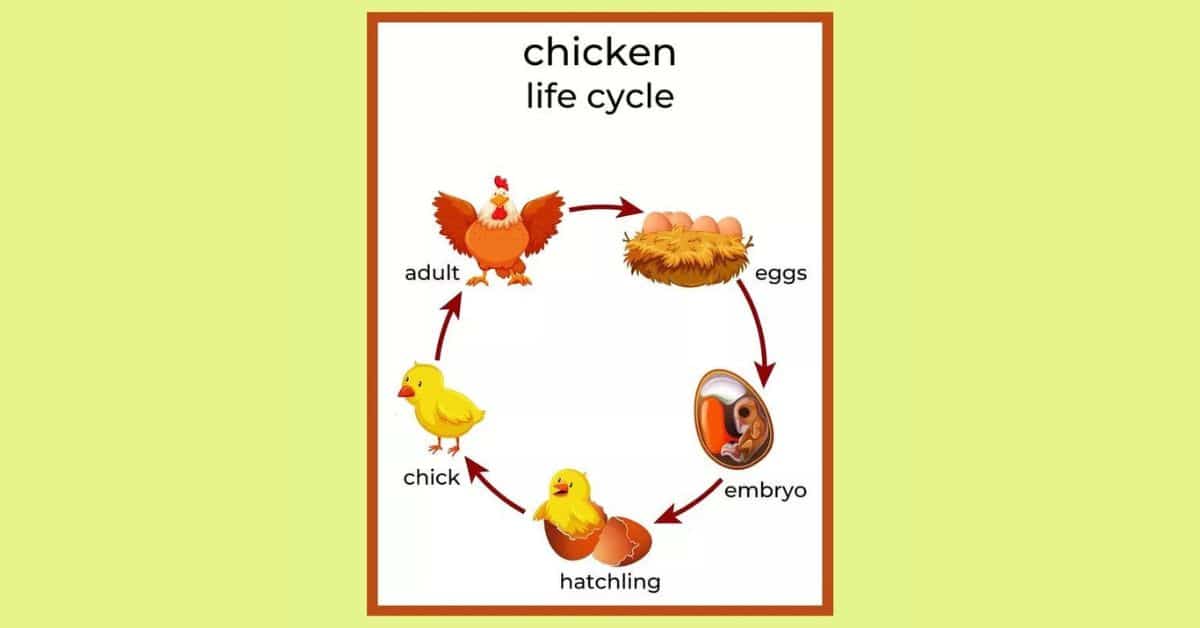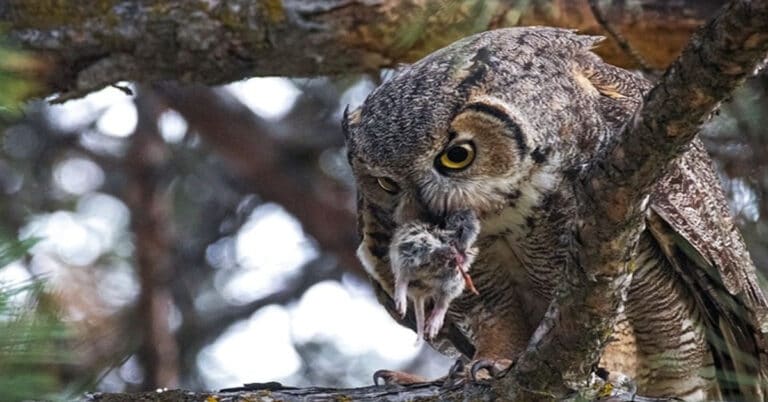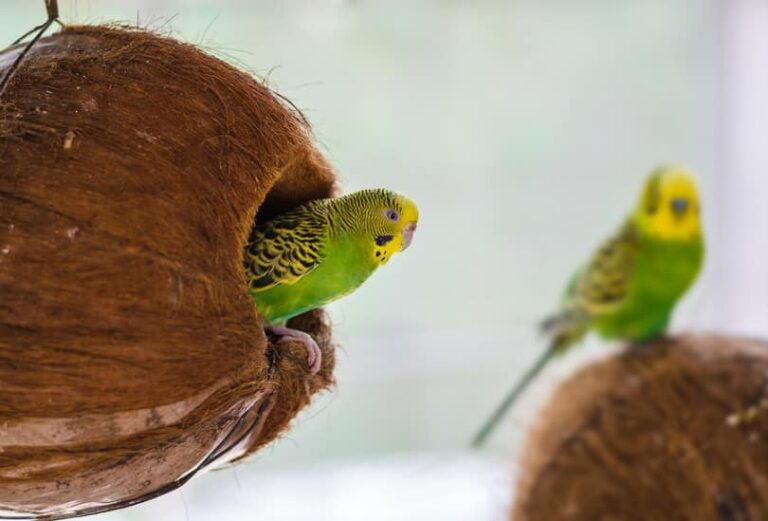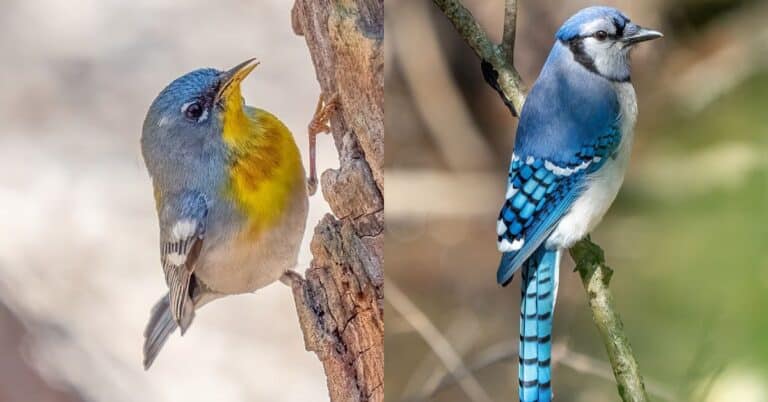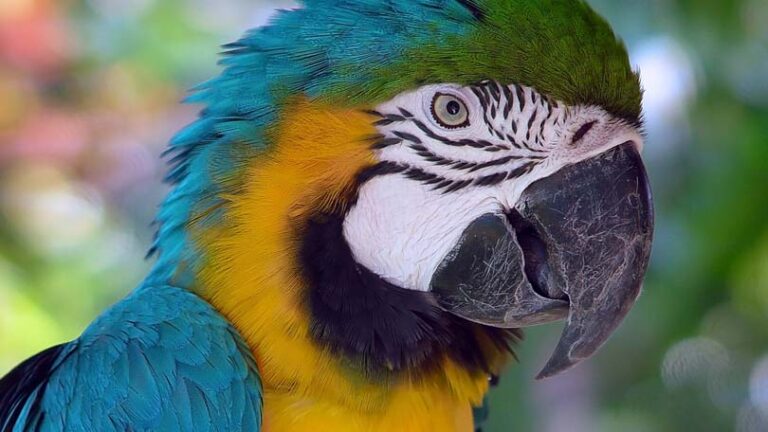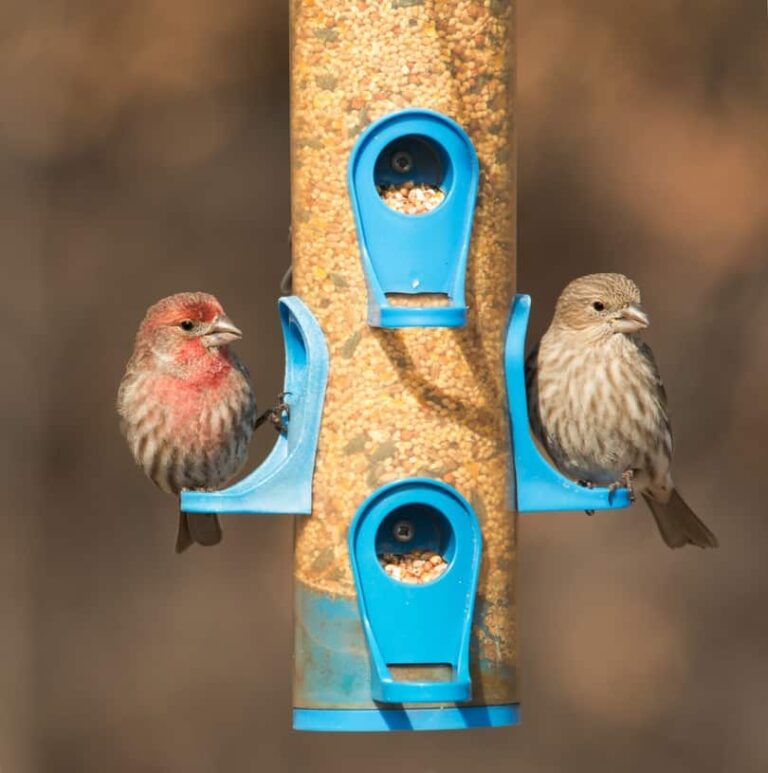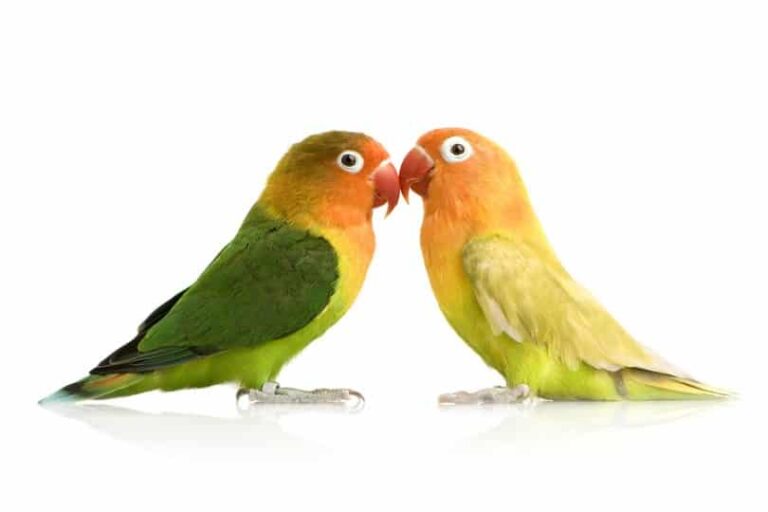Chicken Life Cycle – Development From Egg to Adulthood
Did you know that there are currently up to about 33 billion chickens in the world? While it is unknown which came first, the chickens or the egg, we do know that they are both necessary for the intriguing chicken life cycle.
We consume a lot of chicken and chicken eggs. We also know that although various breeds of chickens generally seem the same on the inside, they can look rather different on the outside.
But what is the life cycle of a chicken? Are there several elements to it? How much time does a viable chicken egg take to hatch? How long does a chicken live as an adult? Let’s investigate these and more intriguing queries about the chicken life cycle.
4 Stages Of Chicken Life Cycle
The chicken life cycle consists of four fundamental stages. The first stage is when the embryo is still in the egg. The moment the egg is deposited, the embryonic phase begins. This stage of life requires 21 days.
The second stage is newly hatched chicks. The time required for this period varies depending on the breed of chicken.
After that, the pullet stage comes. When contemplating the growth of chickens, the pullet stage is sometimes overlooked. It turns out that chickens are similar to people in that they must first mature into teens before becoming adults.
The fourth phase is adulthood. The life cycle of an adult chicken may take up to 7 years. Breed and care practices affect an adult chicken’s lifetime.
Let’s now take a closer look at what occurs throughout each of these four fundamental stages of the chicken life cycle.
Fascinating Embryo Development — Egg Stage
A hen will typically lay one egg every 25–27 hours, and this cycle repeats daily. Unless a rooster has fertilized the hen, an egg will remain unfertilized. In microscopic pouches located in the reproductive organs, the hen may save the rooster’s sperm for up to three weeks. She can also use a clever little method to evacuate the rooster’s sperm if she doesn’t like him.
Until she believes she has enough eggs, she will keep laying viable eggs and collecting them in her nest. She then develops a brood, and you don’t want to meddle with a broody hen. For 21 days, she will carefully sit on those eggs.
Second Stage Of Chicken Life Cycle — Chicks
Mother will keep them warm, stir them frequently, and remove any eggs that are not developing during that period. The ready-to-hatch chick starts chipping away at its eggshell after approximately 21 days of development, forming a ring that it may tear apart with its body. The mother takes care of the newly hatched chicks and responds to their requirements.
To keep them warm and secure, they will spend the first few days of their existence under their mother’s wing. Newly hatched chicks are “wet,” but quickly dry up and transform into the adorable little fuzz balls that humans find so irresistible.
The chick will take all the nutrients from the egg into its body to maintain itself before it hatches. A chick may survive on the nutrients in an egg for between 24 and 72 hours. Even if we can’t see what’s happening within the egg, it’s still vital (and fascinating) to be aware of key “milestones.”
The mother may raise her brood in privacy and safety if the opportunity is given. Without a doubt, the chick stage of the chicken life cycle is the prettiest. Chicks are cuddly, spherical clumps of fluffy feathers. They follow their mother around while making beeping noises. Chickens take after their moms. When a mother hen isn’t around, as when chicks are born in an incubator, they will imprint on the first moving item they see.
Tiny newborn chicks totally rely on their mother, who guides them through their new environment. They require instruction on how to eat and drink. Young chicks are flimsy and shaky. As their muscles continue to grow, it will take them about a week for their legs to strengthen.
Little chicks develop really quickly. In the first month of life, they might alone double in size. The young chicks have reached the adolescent stage of life by the time they are six to eight weeks old and are turned into pullets. Around 10 weeks after hatching, the fuzzy chicks can begin to venture outside as they develop.
Adolescent Chickens — Pullets
Young chickens aren’t the most attractive animals. In comparison to your adult chickens, they appear to be out of proportion since they are scrawny and have just legs. At this stage of the chicken life cycle, they are called pullets.
When the juveniles are about 2/3 the size of the adults, they can be incorporated with the adults. At this stage, the parking can be pretty vicious. The majority of the time, pullets learn to move out of the path fast. Even then, occasionally, an adult bird may decide to treat the newcomers badly and take extreme measures to annoy them.
The youngsters should ideally be kept with the adults if at all feasible, so they only have to experience the pecking once. In order to prevent ongoing violence between the old and new roosters, the lads must learn their position in the flock. So, it is always better if they get incorporated early.
Once the cockerels have established their position in the hierarchy, they will be practicing their crowing at every chance.
Around the 18-week point, adolescent chickens begin to produce eggs. However, breed differences can greatly affect this. When the number of sunny days increases, all birds prefer to deposit their eggs earlier, or later if they mature in the early winter. Pellet becomes an adult after she lays her first egg. Still, some people refer to the eggs as “pullet eggs,” since they are so much smaller than hen eggs.
Last stage of Chicken Life cycle — Adulthood
The last stage of the chicken life cycle is adulthood. A prolific female hen in good health will continue to produce eggs until she is around 72 weeks old. However, this will partly depend on when she goes through her first moult. During their yearly moult, birds shed their old feathers and develop gorgeous new ones in their place.
This usually happens in late summer or early fall, and the outcome is a bird that looks scruffy and extremely ominous. As all of their energy and nutrition is going into building a lovely new covering of feathers during moult, hens will often stop laying eggs, but they may sometimes produce one.
While many birds will quickly begin to lay again, elderly birds may have reached the end of their egg-laying days and may produce much fewer eggs. Hens begin to display indications of aging as they get older. A chicken may show signs of aging by developing a wrinkled and lifeless face, heavy eyes, an enlarging posterior, and a lack of vigor.
How Often Do Chicken Lay Eggs?
Chickens that consistently lay eggs are healthy hens. The most fertile and prolific hens have an egg production capacity of up to 250 eggs per year. However, this does not continue like this. Output falls off each year, and after three years, when the hens reach retirement age, there are fewer eggs produced. In the commercial setting, chickens produce eggs every 22 hours for no more than two years.
The maximum number of eggs per year that well-fed backyard hens may lay is 250. These chickens require at least 24 hours to produce an egg, and this procedure occurs annually naturally in hens. The blue Andalusians, Ameraucanas, white leghorn hybrids, Rhode Island reds, and Plymouth barred rock are the greatest breeds of chickens for egg production.
Similarities between Chicken Life Cycle & Butterfly Life Cycle
Even though they are two separate creatures, the chicken life cycle and butterfly life cycle are somewhat similar. The majority of animal species, including fish, birds, reptiles, and mammals, have very similar life cycles.
Chickens grow and mature into adults after hatching. The life cycles of insects and amphibians are more intricate. As a result, they go through metamorphosis, undergoing a substantial alteration to their physical makeup or behavioral patterns. Complete and incomplete transformation are the two primary categories. In cases of partial metamorphosis, the young really resemble the adult.
They are similar in that they both lay eggs and have wings. However, unlike chickens, caterpillars emerge from butterfly eggs and go through all the phases of development to become another butterfly, whereas chickens go through the stages of embryo, egg, adult, and finally rooster or hen. Their evolution is “homologous,” and both have wings, which is a physical resemblance. The life cycle of a butterfly or moth comprises four stages: egg, larva, pupa, and adult.
Bottom Line – Chicken Life Cycle
All living things develop and undergo changes. Chickens go through some significant transformations throughout time.
It’s crucial to comprehend these changes if you’re a novice chicken owner so that you can provide your chickens with the finest care possible throughout their life cycle. Or maybe you are just curious about all of this. Anyways, this article must satisfy your curiosity by answering significant questions about the chicken life cycle.

Nato is a content writer and researcher with a background in psychology who’s eager to explore the wonders of nature. As a travel enthusiast and animal lover, she hopes to inspire others to discover and cherish the beauty and importance of the natural world.

